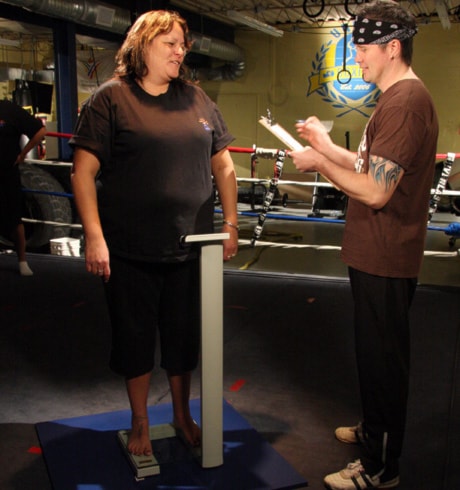WINNIPEG — Sugar is no friend to aboriginals, Kent Brown notes wryly.
The lean former champion boxer doesn’t show personal signs of the carnage it has inflicted on his people, who suffer from significantly higher rates of obesity and diabetes than non-aboriginal Canadians.
But as the trainer on Fit First, a new show airing on the Aboriginal Peoples Television Network, he’s doing what he can to undo what lack of exercise and poor eating habits have done to others. (It airs Wednesday at 11:30 a.m. in most locations.)
“It’s the eating habits our people have taken on,” he said. The Pepsi being cheaper than milk in some of our communities, the extra fatty foods, the processed foods that we’re putting into our body.“
Late morning sun streams in as Leann Frederickson, mother of two, grandmother of one, steps up to the heavy bag in a quiet boxing gym to show a visitor some of what she’s learned.
She gets a reminder from Brown that she better remove her rings — jewelry and throwing punches don’t mix — then it’s jab, left hook, right cross.
The bag is just a small part of the fitness regime Frederickson and the three other out-of-shape participants used to start their journey towards a healthier lifestyle.
“I wanted to do this to get healthy,” she says. “I know diabetes runs in my family as well. Every time I go to the doctor she’s kind of shocked I’m not (diabetic). . . My grandson’s four, I want to be around for him.”
Incorporating many familiar elements of the fitness makeover genre, such as exercise and tips on eating better, Fit First also includes one thing that sets it apart — it is by and for aboriginal Canadians.
“For us (aboriginal people) . . . it’s the medicine wheel,” says Brown. “Once one of those cogs are out of that wheel, everything that you are, your whole body, falls out of place.”
The medicine wheel is common to most aboriginal cultures in North America and generally represents the circle of life. It can include the four stages of life; infant, youth, adult and elder; the four races, black, yellow, white, and red; the four seasons, or the compass directions.
It also can represent the mental, emotional, spiritual and physical aspects of development and the show isn’t just about losing weight, says Brown.
“People lose weight all the time, up and down . . . It’s the whole (medicine wheel) again, the mental, emotional, physical and spiritual aspect of our lives. . . .
“This is more about the overall health of our people and going back to some of the old ways we used to cook and feast, sort of bringing that back.”
For Frederickson, getting into balance became a family affair. The 48-year-old mother and grandmother wasn’t about to do it alone.
“My family and I we did it together . . . If I’m doing this, we’re all doing this, cause I’m not cooking different dinners and different lunches. If I’m in it we’re all in it.”
“My son came to boxing with me. My daughter came to hot yoga with me. . . As a family, we did it.”
Frederickson’s weight loss is revealed in the show, which has wrapped its first six episodes airing this fall. But her daughter lost 41 pounds, her husband 30 and her son took up boxing and toned his body.
CBC radio producer Kim Ziervogel, who found her weight difficult to manage after having three children, was another member of the group who says the experience has left her with a desire to stay fit.
“After they were born I stopped being active and got more sedentary and then I hit 40,” she says, but that all changed after the six months doing the show.
“I really liked it a lot. It gave me an opportunity to do something I don’t think I would have had the inclination to do on my own. Being accountable to the TV camera every four to six weeks was highly motivating.”
This was no aboriginal version of “The Biggest Loser,” however.
“We were always there supporting each other and that was very helpful too.”
Although her teenage children are all still “super skinny,” she says, they too supported her and were always ready to snatch the bag of chips out of her hand. And she is doing her best to keep up the routine, despite slipping a little when the show ended due to a family tragedy.
“I haven’t taken an elevator at work since March 1st. I always take the stairs now.”
